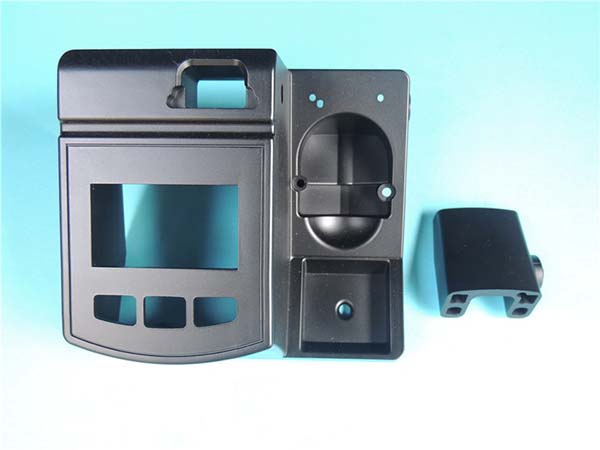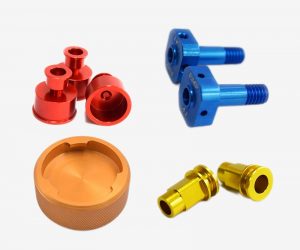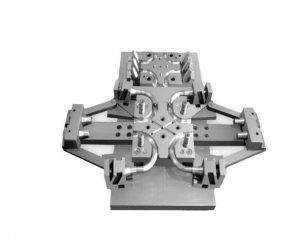1. Introduction
In the world of manufacturing, choosing the right molding process and material is crucial. Baquelite molding has been a staple in various industries for decades. But with the plethora of modern materials and molding techniques available, the question arises: is bakelite molding still a viable option for your manufacturing requirements? This article aims to comprehensively explore bakelite molding, covering its processes, properties, applications, advantages, and disadvantages, to help you make an informed decision.
2. Understanding Bakelite
2.1 Chemical Composition and Structure
Bakelite is a thermosetting plastic formed by the polymerization of phenol and formaldehyde. Under heat and pressure, these monomers react to create a three - dimensional cross - linked polymer structure. This unique structure gives bakelite its characteristic properties, such as heat resistance, hardness, and chemical stability. The cross - linking process is irreversible, which means that once bakelite is molded, it cannot be remelted or reshaped like thermoplastics.
2.2 Physical and Mechanical Properties
| Property | Value/Description |
| Density | Bakelite typically has a density in the range of \(1.3 - 1.4\ g/cm^3\). This relatively high density contributes to its strength and durability. |
| Hardness | It exhibits a high hardness, with a Shore D hardness usually between 85 - 90. This makes it highly resistant to scratches and abrasion, suitable for applications where surface integrity is important. |
| Tensile Strength | The tensile strength of bakelite can range from 30 - 50 MPa, depending on the formulation and manufacturing process. It provides sufficient strength for many mechanical applications. |
| Compressive Strength | Compressive strength is generally higher than tensile strength, often in the 100 - 200 MPa range. Bakelite can withstand significant compressive forces without deforming. |
| Heat Resistance | Bakelite is known for its excellent heat resistance. It can operate at temperatures up to 150 - 200 °C without significant degradation of its mechanical properties. Some specialized grades can endure even higher temperatures for short periods. |
| Electrical Insulation Resistance | Bakelite has extremely high electrical insulation resistance, typically in the order of \(10^{12}-10^{14}\Omega\cdot cm\). This property makes it an ideal choice for electrical insulation applications. |
| Dielectric Strength | It can withstand voltages in the range of 10 - 30 kV/mm, depending on the thickness of the molded part. Its ability to withstand high voltages without breaking down is crucial for electrical safety. |
3. Bakelite Molding Processes
3.1 Compression Molding
Process Description
Compression Yigu Technology molding is one of the most common methods for molding bakelite. In this process, a pre - measured amount of bakelite resin, often in the form of a pre - shaped pellet or sheet, is placed in a heated mold cavity. The mold is then closed, and pressure is applied. The heat and pressure cause the bakelite to soften, flow, and fill the mold cavity. As the bakelite cures under heat and pressure, it takes on the shape of the mold. The curing time depends on factors such as the thickness of the part, the complexity of the mold design, and the type of bakelite being used.
Advantages
- Suitable for large and thick parts: Compression molding can produce large - sized and thick - walled bakelite parts with relative ease. This is because the process allows for better control over the flow of the material, ensuring uniform filling of the mold cavity.
- Low - cost tooling: The molds used in compression molding are relatively simple and cost - effective compared to some other molding processes. This makes compression molding an attractive option for low - volume production runs or when cost is a major concern.
- Good for high - pressure applications: The high pressure applied during compression molding helps to compact the bakelite material, resulting in parts with high density and excellent mechanical properties. This makes compression - molded bakelite parts suitable for applications that require high strength and durability, such as in automotive and industrial machinery.
Disadvantages
- Longer cycle times: Compression molding generally has longer cycle times compared to injection molding. The curing process, which involves heating the mold and allowing the bakelite to fully cross - link, can take several minutes. This can limit the production rate, especially for high - volume production.
- Limited complexity: While compression molding can produce parts with moderate complexity, it may not be as suitable for creating highly intricate or detailed shapes as injection molding. The flow of the bakelite material during compression molding is more restricted, making it difficult to achieve sharp corners or fine details.
3.2 Injection Molding
Process Description
Injection molding of bakelite involves injecting pre - heated bakelite resin into a mold cavity using a reciprocating screw or plunger. The bakelite resin is first heated to a molten state in a barrel and then forced into the closed mold under high pressure. Once the mold is filled, the resin is allowed to cure under heat. After curing, the mold is opened, and the finished part is ejected. Injection molding requires specialized equipment, including an injection molding machine and a precisely designed mold.
Advantages
- High - volume production: Injection molding is highly efficient for high - volume production. The process can be automated, allowing for rapid and continuous production of bakelite parts. Cycle times can be relatively short, especially for small to medium - sized parts, which significantly increases productivity.
- High precision and complex shapes: Injection molding can produce parts with high precision and intricate shapes. The high pressure used to inject the molten bakelite into the mold ensures that the material fills even the most detailed areas of the mold cavity. This makes it suitable for applications such as electronics, where small and complex - shaped components are required.
- Good surface finish: Injection - molded bakelite parts typically have a smooth and consistent surface finish. This can reduce the need for post - processing operations such as polishing or finishing, saving time and cost.
Disadvantages
- High initial investment: Injection molding requires a significant initial investment in equipment and tooling. The injection molding machine, molds, and associated equipment can be expensive, making it less viable for small - scale production or for companies with limited budgets.
- Material waste: There can be some material waste in injection molding, especially if the process is not optimized. The sprue (the channel through which the material is injected into the mold) and runners (the channels that distribute the material to the mold cavity) may contain excess bakelite that cannot be reused in the same form. However, some recycling methods can be employed to minimize this waste.
4. Applications of Bakelite Molding
4.1 Electrical and Electronic Industry
Electrical Insulators
Bakelite's excellent electrical insulation properties make it a popular choice for electrical insulators. In power distribution systems, bakelite - molded insulators are used to support and isolate electrical conductors. They prevent the flow of electricity to unwanted areas, ensuring the safe operation of electrical equipment. For example, in high - voltage switchgear, bakelite insulators are used to insulate the contacts and prevent electrical arcing.
Circuit Boards
Bakelite - based circuit boards were widely used in the early days of electronics. Although modern electronics often rely on more advanced materials such as fiberglass - epoxy (FR - 4) for high - performance applications, bakelite circuit boards are still used in some low - cost and specialized electronics. Their heat resistance helps dissipate heat generated by electronic components on the board.
4.2 Automotive Industry
Brake Components
Bakelite is used in the manufacturing of brake components such as brake pads and clutch facings. Its high heat resistance and good frictional properties make it suitable for these applications. When brakes are applied, a large amount of heat is generated. Bakelite can withstand this heat and maintain its structural integrity, ensuring reliable braking performance.
Interior Components
Some automotive interior components, like knobs, handles, and decorative trim, are made of bakelite. Its ability to be molded into various shapes, along with its durability and aesthetic appeal, makes it a suitable choice for these applications.
4.3 Consumer Goods
Kitchenware
Bakelite has been used in kitchenware, such as pot handles and utensils. Its heat resistance allows it to withstand the high temperatures associated with cooking. For Yigu Technology example, bakelite pot handles remain cool to the touch even when the pot is heated on the stove, providing safety for the user.
Jewelry and Decorative Items
Due to its ability to be molded into intricate shapes and its attractive appearance, bakelite is sometimes used in the production of jewelry and decorative items. Vintage bakelite jewelry is highly collectible, known for its unique colors and patterns.
5. Advantages of Bakelite Molding
4.1 Cost - effectiveness
Bakelite is relatively inexpensive compared to some high - performance engineering plastics. The raw materials, phenol and formaldehyde, are widely available and cost - effective. Additionally, the molding processes for bakelite, especially compression molding, can be relatively low - cost in terms of tooling. This cost advantage makes bakelite molding an attractive option for applications where cost is a significant factor, such as in some consumer goods and low - end industrial products.
4.2 Good Mechanical and Electrical Properties
As mentioned earlier, bakelite offers a good combination of mechanical and electrical properties. Its high hardness, decent tensile and compressive strength, along with excellent electrical insulation, make it suitable for a wide range of applications that require both mechanical integrity and electrical safety. This versatility is a major advantage, as it allows for the use of a single material in applications that might otherwise require multiple materials with different properties.
4.3 Heat Resistance
The heat resistance of bakelite is a significant advantage. In applications where heat is generated, such as in electrical components, automotive brake systems, and kitchenware, bakelite can maintain its properties without significant degradation. This reduces the risk of component failure due to overheating and extends the lifespan of the products in which it is used.
5. Comparison with Alternative Materials
5.1 Comparison with Polycarbonate
| Property | Baquelite | Polycarbonate |
| Impact Resistance | Low (brittle) | High, polycarbonate is known for its excellent impact resistance |
| Transparency | Usually opaque, limited transparency options | Can be highly transparent, with good optical clarity |
| Heat Resistance | Good, up to 150 - 200 °C | Also good, can withstand temperatures up to 130 - 140 °C continuously |
| Cost | Relatively low | Higher, due to more complex manufacturing processes and raw materials |
| Recycling | Difficult, non - recyclable in traditional ways | Can be recycled, although the process has its challenges |
5.2 Comparison with Aluminum
| Property | Baquelite | Aluminum |
| Electrical Conductivity | High electrical insulation, while aluminum is a good electrical conductor. This makes aluminum unsuitable for electrical insulation applications where bakelite excels. | Good electrical conductivity, used in electrical conductors and heat sinks. |
| Thermal Conductivity | Low thermal conductivity compared to aluminum. Aluminum is an excellent heat conductor, making it ideal for heat - dissipating applications. | High thermal conductivity, around 200 - 240 W/(m·K), much higher than bakelite. |
| Mechanical Strength | Good mechanical strength for its weight, but aluminum can be alloyed to achieve very high strength - to - weight ratios. Aluminum is also more ductile and less brittle. | Can be very strong, especially when alloyed, and has good formability. |
| Cost | Usually more cost - effective, especially for small - to - medium - scale applications. Aluminum costs can vary depending on the alloy and market conditions. | Cost can be relatively high, especially for high - performance alloys. |
| Corrosion Resistance | Good chemical resistance, but aluminum can be more corrosion - resistant when properly treated. However, in some chemical environments, bakelite may have an advantage. | Can be made highly corrosion - resistant through anodizing or other surface treatments. |
6. How to Choose Bakelite Molding for Your Project
The first step in choosing bakelite molding for your project is to carefully assess your application requirements. Consider factors such as the operating temperature, mechanical stress, electrical properties needed, chemical exposure, and aesthetic requirements. If your application involves high temperatures, moderate mechanical stress, and cost is a key factor, Yigu Technology bakelite molding may be a suitable choice. However, if high impact resistance or a wide range of color options are essential, you may need to look at alternative materials.
7. Conclusion
Bakelite molding offers a range of advantages, including cost - effectiveness, good mechanical and electrical properties, and heat resistance. It has been used in various industries for many years and continues to be a viable option in certain applications. However, it also has limitations, such as brittleness, limited color options, and environmental concerns. When choosing a material and molding process for your projects, it's essential to carefully weigh the pros and cons of bakelite molding against your specific requirements and compare it with alternative materials. By doing so, you can make an informed decision and select the option that best suits your project, ensuring both performance and cost - effectiveness.



